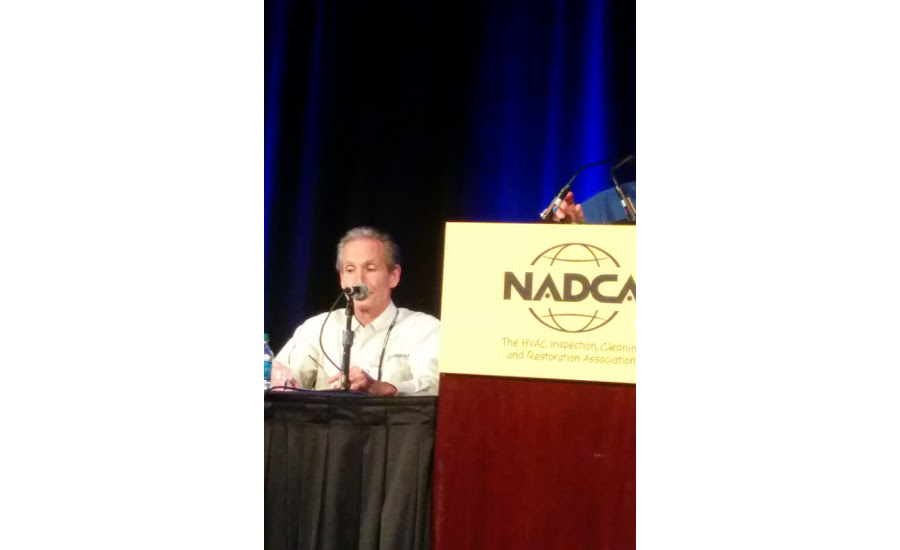LAKE BUENA VISTA, Fla. — While duct sealing probably isn’t as well-known to the public as other types of HVAC system maintenance, with a growing recognition of its importance in ensuring good indoor air quality and saving energy, it’s an excellent service for duct cleaners to add.
That was the consensus of industry panelists who took part in the National Air Duct Cleaners Association’s March 22 session on duct sealing and building codes at the group’s annual convention at a Walt Disney World resort.
Tim Eorgan of Carlisle HVAC Products was among the panelists on hand for the hour-long talk, which was moderated by Mike White, vice president of Clean Air Systems Louisiana Inc.
Some contractors have yet to see the business potential of duct sealing, which means it’s an excellent opportunity for NADCA members, the panel said. In an interview after the seminar, Carlisle’s Eorgan pointed out that his company is working hard to get out the word that duct sealing is a necessary and in-demand service.
“Contractors are picking up the idea that duct have to be sealed,” said Eorgan, who works as Carlisle’s specified products manager. “The biggest thing that’s driving this whole thing is the codes.”
Eorgan was referring to the International Energy Conservation Code as well as the U.S. Green Building Council’s Leadership in Energy and Environmental Design rules, and the government’s Energy Star program.
Many of the code-writing organizations such as ASHRAE are putting rules in place that require duct sealing, Eorgan said. Such regulations slowly get adopted at the state and municipal level, where they show up in construction codes.
“There’s always a lag time,” Eorgan added. “You’ve got to educate all these building inspectors.”
Educating lawmakers and building officials help homeowners get the message, he added.
“(Duct sealing) helps their energy efficiency. It keeps their heating and cooling costs down so they’re not heating the attic or cooling crawl spaces,” Eorgan said.
The American Society of Heating, Refrigerating and Air-Conditioning Engineers’ 90.1 standard has required ductwork be sealed to a “class A” standard since 2010, meaning any significant leakage is no longer acceptable.
“Anywhere that duct gets penetrated, it has to be sealed,” Eorgan said.



Report Abusive Comment